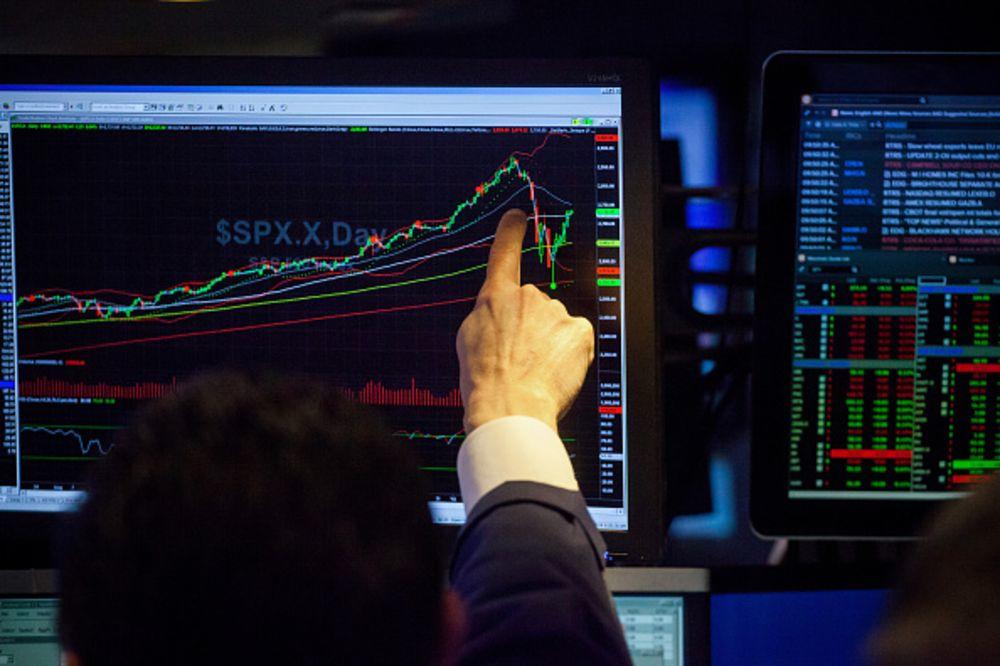Authored by Komal Sri-Kumar, op-ed via Bloomberg.com,
Investors can play the greater fool theory and ride the rally, but a safer approach is warranted.
It was only a few months ago that the U.S. Federal Reserve was intent on continuing to increase interest rates. But now, some policy makers are even hinting that the next move may be a rate cut, and they may even pursue other forms of policy easing despite equities reaching record highs again. If that is the message Fed Chairman Jerome Powell will provide at his press conference Wednesday following a two-day meeting with policy makers, it would spur equities to even greater heights and drive yields on Treasury securities even lower.
To see why this is a likely scenario, it helps to understand why the move toward further policy easing may occur. Maintaining healthy employment and stable inflation are the twin objectives of Fed policy. Since the 2008 financial crisis, three Fed chairs have attempted without success to reach and sustain a 2 percent inflation goal. They rationalized that near-zero interest rates and three bouts of quantitative easing would take the economy toward that target. But despite the Fed’s balance sheet having more than quintupled from $800 billion in late 2008 to a peak of $4.5 trillion by 2015, inflationary pressures have remained dormant.
The inflation numbers for the first quarter released Friday showed a further easing of inflationary pressures. The core personal consumption deflator that excludes food and energy fell from an already low 1.8 percent in the final quarter of 2018 to 1.3 percent in the first three months of 2019. Inflation this low could quickly turn into deflation, as has been Japan’s experiencesince the early 1990s. Negative inflationary expectations become self-sustaining since they encourage consumers and investors to postpone spending, further deepening a downturn.
Federal Reserve Bank of Chicago President Charles Evans told the Wall Street Journal this month that if the core inflation rate held at around the 1.5 percent area for a few months, he “would definitely be thinking about taking insurance” by cutting rates. Robert Kaplan, head of the Federal Reserve Bank of Dallas, also indicated that if inflation persisted at low levels, he would have to take that into account in setting rates.
Even if Powell suggests at his May 1 press conference that such a move could occur within a few months, that may not be the end of the easing cycle. The Fed is unlikely to succeed in raising the inflation rate now any more than it has been able to do in the past decade. Even if a rate cut is accompanied by an announcement that the Fed would resume bond purchases, that may not pressure inflation higher.
Low inflation in recent years has been the result of an aging U.S. population that tends to consume less, Trump administration policies that have discouraged immigration of young workers who could have contributed to spending, and a labor force participation rate that is still below pre-crisis levels. These issues are structural and do not respond to monetary stimulus measures. Furthermore, if rates are reduced, low- and middle-income workers will find themselves losing out on interest income as they did in the years after the crisis. This too will curb consumption and hold back inflation.
Under these circumstances, the Fed will likely double up on policies that don’t work, sending financial asset prices even higher; failure may only breed further efforts in the same direction. This expectation is borne of experience. When the Fed deemed that the first effort at quantitative easing that was announced in late 2008 was not sufficient to spark faster inflation and put economic growth at an acceptable pace, it introduced second and third versions of bond purchases, providing a backstop to financial assets for several years.
How then would the rally end? A few more rounds of lower rates and putting more cash in the hands of investors may eventually send valuations to unsustainable levels. At some point, perhaps by mid-2020, further Fed easing may only increase the anxiety level in markets regarding what bad news central bankers are aware of that investors are not privy to. That would be the time when even the Fed may not be able to support markets.
Of course, in such a scenario, investors can play the greater fool theory and go with the upward market momentum and ride the rally. A safer approach would be to gradually reduce their presence in risk assets over the coming months.
via ZeroHedge News http://bit.ly/2LaDYLR Tyler Durden
